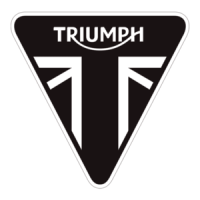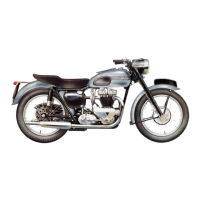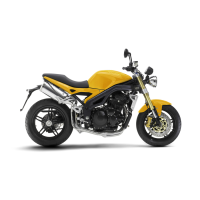Dismantling
Rigid Rear Wheel
DISMANTLING THE REAR WHEEL
Spindle Nuts.
Remove both spindle nuts and chain adjuster thrust collars.
Brake Anchor Plate. Unscrew the anchor plate nut and remove the brake
anchor plate.
Wheel Spindle. Turn the wheel over and remove the bearing adjusting locknuts
and withdraw the rear wheel spindle.
Bearing Inner Races. Remove both bearing inner races. The cages will be
retained by the .dust caps. The outer races are a press
fit
and can be removed by
tapping out from the opposite side with a drift.
DISMANTLING THE REAR BRAKE ANCHOR PLATE
Brake Shoes. Take off both brake shoe return springs and remove the brake shoes.
Brake Shoe Cam. Remove the nut and washer securing the lever arm to the cam
spindle and take
off
the lever arm. Withdraw the cam from the plate.
INSPECTION
AND
REPLACEMENT OF WORN PARTS
Cleaning. All parts with the exception of the brake shoes, should be thoroughly
washed in petrol or
paraffin.
Anchor Plate. Examine the anchor plate for distortion and wear, particularly in
the brake cam housing.
Check that the locating stud
is
secure.
Brake Cam. Clean out the greaseways and remove any rust with a fine emery
cloth. Re-fill the greaseways with clean grease.
Roller Races. Thoroughly clean and dry the roller
races
and cages.
Inspect the
rollers and tracks for pitting and scoring.
Change the bearings if they are not up
to standard. Pack the races with grease before replacing to the hub.
Bearing Backing Rings.
These rings should be examined carefully
as
they are
very liable to damage when the bearings are withdrawn from the hub and will
probably require replacing.
Anchor Plate and Bearing Locking Nuts. Examine these nuts for damage to
the threads and hexagons.
Spindle.
The rear wheel spindle should be checked for bends and signs of the
wheel nuts .having been overtightened. Do not replace
a
wheel spindle which
shows any sign of damage or distortion.
Return Springs.
Inspect for signs of fatigue and renew if necessary.

